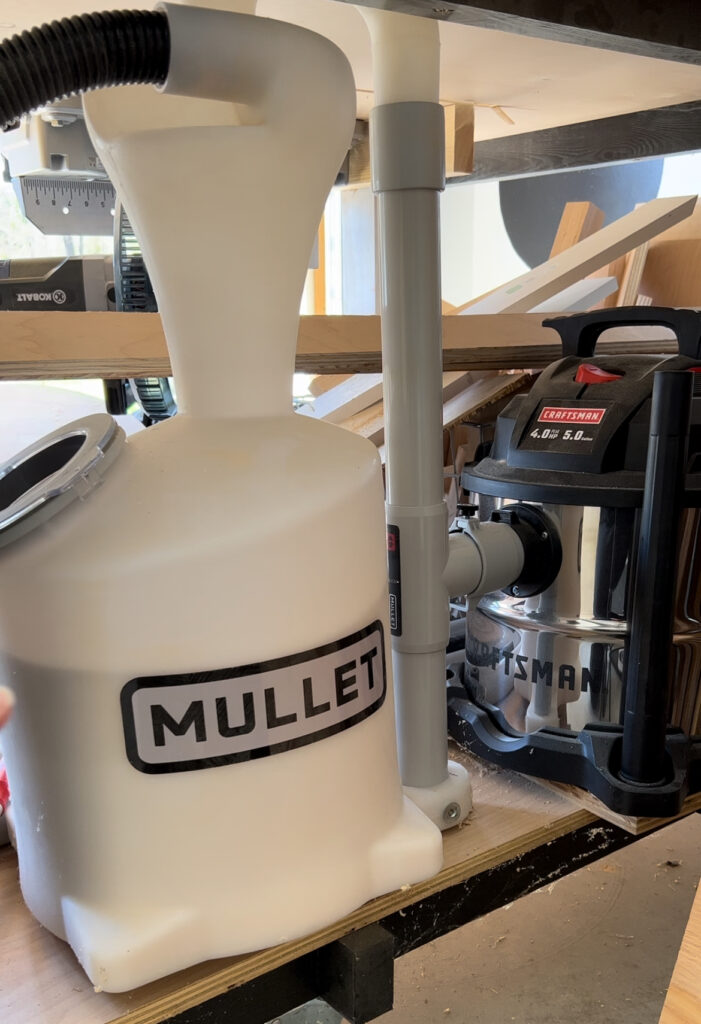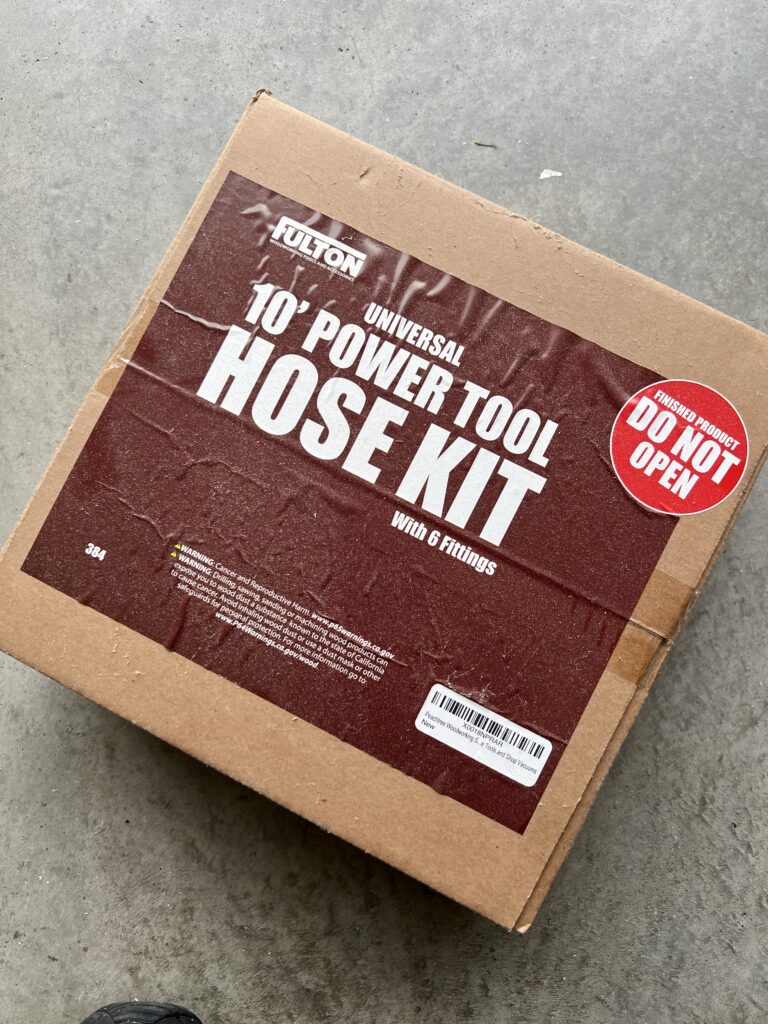
How does a Dust Collector Work?
A clean and dust-free workshop is not just a luxury—it’s a necessity for anyone serious about woodworking, metalworking, or any other craft that produces airborne particles. The accumulation of dust, wood chips, and debris can quickly become a hazard, not only compromising the quality of your work but also posing significant health risks. So, how does a dust collector work?
Fine particles of dust can linger in the air long after you’ve finished a project, and without proper ventilation or filtration, these particles can be inhaled, leading to respiratory problems over time. Additionally, the buildup of dust on your tools and machinery can reduce their efficiency and lifespan, leading to increased maintenance costs and potential downtime.
Have you ever wondered how some people keep their workshops so clean?
This is where dust collectors come into play. Dust collectors are essential tools in any workshop, serving as the frontline defense against airborne contaminants. By capturing and filtering out dust and debris, these machines ensure that your workspace remains clean and safe, allowing you to focus on your craft without the constant worry of dust-related problems. But how exactly does a dust collector work, and what should you consider when selecting one for your workshop?
In this comprehensive guide, we will delve into the mechanics of dust collectors, exploring how they operate, the various types available on the market, and the critical factors to consider when choosing the right model for your needs. Whether you’re a hobbyist with a small home woodworking shop or a professional running a large-scale operation, understanding the principles of dust collection will empower you to make informed decisions that enhance both your safety and productivity.
The Basic Function of a Dust Collector
At its core, a dust collector is designed to extract airborne dust and debris from a workspace, filtering it out and collecting it in a bin or bag for easy disposal. The primary components of a dust collector include:
- Motor and Fan: The motor powers the fan, which creates suction that draws dust-laden air into the system.
- Filtration System: The air, now carrying dust particles, passes through a series of filters that capture the dust while allowing clean air to pass through.
- Collection Bin: Captured dust and debris are stored in a bin, bag, or drum, which can be emptied as needed.

How a Dust Collector Works: Step-by-Step
1. Suction and Airflow
The dust collection process begins with the motor and fan. The motor powers the fan, which creates a powerful airflow that sucks in dust and debris from the surrounding area. This airflow is crucial for effectively pulling in particles of various sizes.
- Tip: The strength of the suction is measured in cubic feet per minute (CFM). A higher CFM means the system can handle larger volumes of air, making it more effective for larger workshops with multiple machines.
2. Dust Capture
As the air is pulled into the dust collector, it carries dust particles, wood chips, and other debris along with it. This contaminated air enters the system through a hose or ductwork connected to your tools or work area.
- Tip: Properly sizing the hose or ductwork is essential to maintain strong airflow. Too small, and it restricts airflow; too large, and it reduces the velocity needed to capture dust.
3. Filtration
Once inside the dust collector, the air passes through one or more filters. These filters are designed to capture particles of various sizes, from large wood chips to fine dust.
There are different types of filters used in dust collectors:
- Bag Filters: These fabric bags capture dust on the inner surface while allowing clean air to pass through. They are effective but may require regular cleaning.
- Cartridge Filters: These cylindrical filters offer more surface area in a compact space and can capture finer particles than bag filters.
- HEPA Filters: High-Efficiency Particulate Air (HEPA) filters can capture 99.97% of particles as small as 0.3 microns, ensuring even the finest dust is trapped.
- Tip: Regularly clean or replace filters to maintain the efficiency of your dust collector. Clogged filters reduce airflow and decrease suction power.
4. Separation of Dust and Air
In some dust collectors, especially cyclone models, the air and dust particles undergo a separation process before filtration. The air is forced into a cyclonic motion, causing heavier particles to drop into a collection bin due to centrifugal force, while the lighter dust continues toward the filter.
- Tip: Cyclone dust collectors are particularly effective for larger workshops where high volumes of dust and debris are generated, as they reduce the load on the filter and extend its lifespan.
5. Collection of Dust and Debris
The captured dust and debris are collected in a designated bin, bag, or drum. This container can be emptied when full, making it easy to manage the waste produced during your work.
- Tip: Consider the capacity of the dust collector’s bin when choosing a model. A larger bin means less frequent emptying, which is beneficial for high-production environments.
6. Exhaust of Clean Air
After filtration, the cleaned air is either exhausted back into the workshop or vented outside. In systems with high-efficiency filters, the air is often clean enough to be recirculated into the workshop, reducing energy costs associated with heating or cooling.
- Tip: Ensure your dust collector is properly sealed to prevent leaks, which can allow dust to escape back into the workshop.
Different Types of Dust Collectors
There are several type of dust collector, each suited to different applications:
- Single-Stage Dust Collectors: These are the most common type, where the air and dust are pulled into a single stage for filtration and collection. They are simple and effective for smaller workshops.
- Two-Stage (Cyclone) Dust Collectors: In these systems, dust and debris are separated from the air before reaching the filter, reducing filter load and increasing efficiency. They are ideal for larger workshops with higher dust loads production.
- Portable Dust Collectors: These units are compact and can be easily moved between tools, making them ideal for small workshops or job sites.

What type of dust collection do we use?
We have a cyclone separator dust collector that then connects into our shop vac. For the type of projects we do it has worked amazing for us for dust management. My husband also has his gym in our garage. So keeping the wood dust off of everything else in the garage was important.
We also have a lot of storage in our garage for holiday decor. Knowing we needed our garage to function in so many ways as a family. We knew a dust collector was our answer to helping keep our garage a lot cleaner from projects. The Mullet Cyclone dust collector is what we decided on. Its size, easy setup since we had no previous experience with a dust collector before and ability to easily move and versatility was what we needed most.
If you are in the market for a beginner friendly dust collector. Mullet Dust Collectors are a must to check out! They are used by everyday DIYers like myself to onsite trade professionals.
Common Mistakes to Avoid
- Overlooking Filtration: Always choose a dust collector with adequate filtration for your workshop’s needs. Insufficient filtration can result in fine dust particles being recirculated into the air.
- Ignoring Maintenance: Regular maintenance, such as cleaning or replacing filters, is essential to keep your dust collector working efficiently.
- Underestimating CFM Requirements: Ensure your dust collector’s CFM rating is sufficient for your tools and the size of your workshop. Inadequate suction can lead to poor dust collection and increased cleanup.
Before you go and choose your dust collection system…
Understanding the workings of a dust collector is fundamental to maintaining a safe, efficient, and productive workshop environment. Whether you’re crafting fine furniture, building cabinetry, or engaging in any activity that generates dust and debris, a dust collector is an indispensable tool that ensures your air quality remains clean and your health protected. From the basic components like the motor and fan to the sophisticated air filtration system that capture even the finest particles, each element of a dust collector plays a crucial role in its overall effectiveness.
Choosing the right dust collector system for your needs involves more than just picking a machine off the shelf. It’s about understanding the specific requirements of your workshop, the volume and type of dust produced, and the capacity of the dust collector to handle these demands. By considering factors such as CFM rating, filter type, and collection capacity, you can select a dust collector that not only meets your current needs but also adapts to future growth in your workshop.
Regular maintenance is key for your dust collection system
Moreover, regular maintenance and proper operation of your dust collector are key to ensuring its longevity and efficiency. By keeping filters clean, monitoring the system’s performance, and addressing any issues promptly, you can maximize the lifespan of your equipment and maintain a consistently clean workspace.
Ultimately, a well-chosen and well-maintained dust collector is an investment in your workshop’s future. It protects your health, preserves the quality of your tools, and contributes to a more pleasant and productive working environment. As you move forward with your projects, you’ll find that a dust collector is not just a helpful addition to your workshop—it’s a vital component that enhances every aspect of your work.
A dust collector is essential for a clean and safe workshop. For more woodworking setup tips, check out How to Build Kitchen Cabinet Boxes or our Easy Low Budget DIY Garage Makeover Ideas for organization inspiration.
If or when you decide to tackle how does a dust collector work, I’d love for you to tag us on Instagram so I can see your really fun recipes and DIY projects come to life!
COZY HOME, COZY RECIPES:
Every cozy home deserves amazing recipes, and it’s even better when those recipes are both delicious and healthy. Our goal is to provide tasty meals that are easy to make, regardless of your skill level.
Fast, easy meals leave more time for fun activities, making your home a hub of joy and good food.
CONNECT WITH US:
As always, we love hearing about your experiences with our “How Does a Dust Collector Work? Understanding the Basics”. Reach out to us through our social channels. Any questions you have, we’re here to answer.
Stay updated by joining our newsletter, offering a monthly dose of new recipes and a first look at upcoming projects.
MORE COZY KITCHEN RECIPES:
If you’re hungry for more, explore our collection of Cozy Kitchen Recipes. Another healthy favorite is the “Sausage Potato Veggie Bake.” Find these recipes and more here.
DIY RESOURCES:
For additional resources, check out our DIY Tutorials, offering a wealth of information to enhance your home improvement skills.

